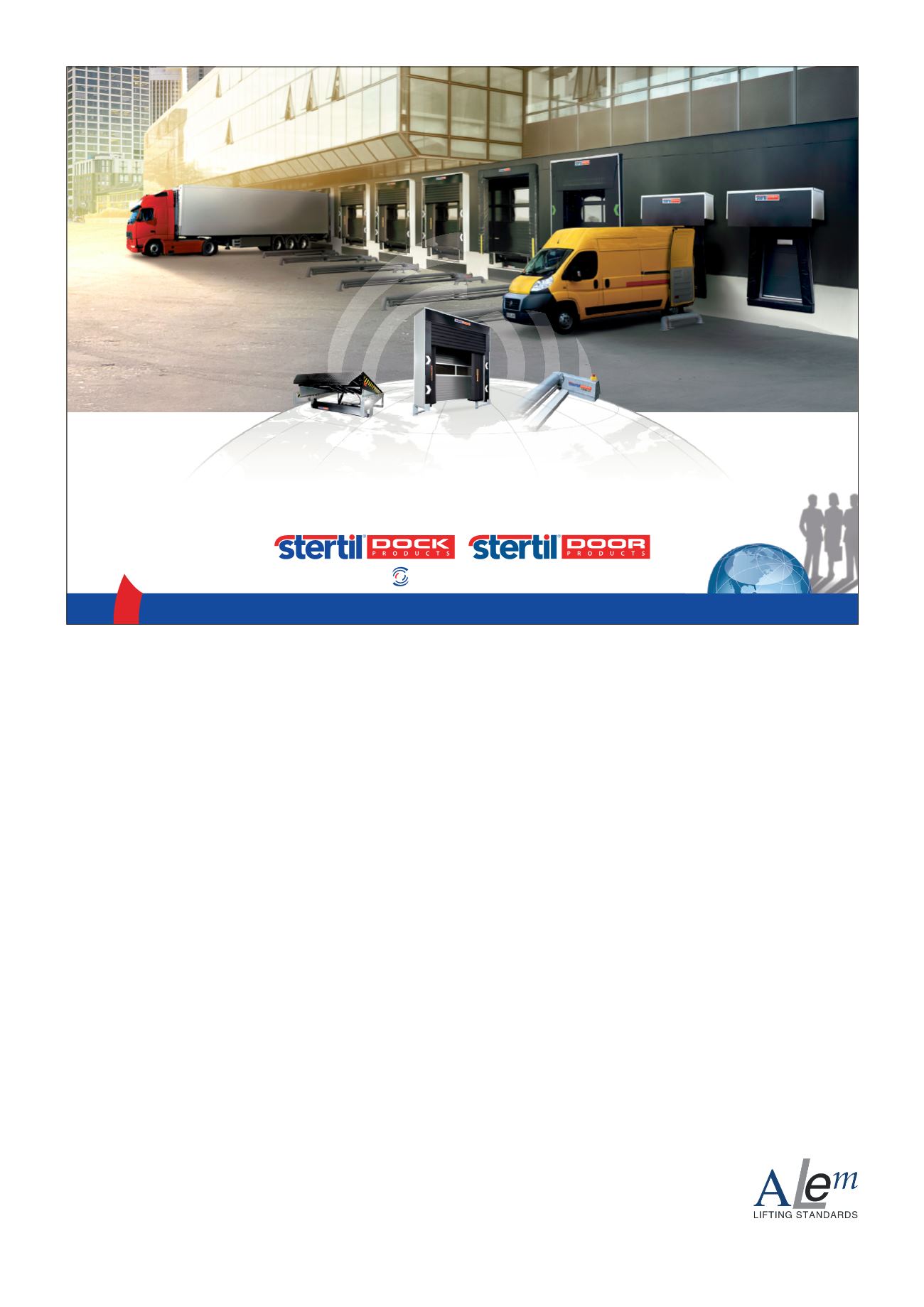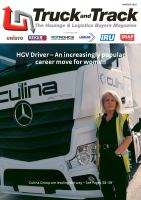
 www.truckandtrack.com
www.truckandtrack.com
Winter 2018
Truck and Track
31
LOADING BAYS
a member of the Stertil Group
Tel. 0870 770 0471,
info@stertil.co.uk, w ww.stertil-dockproducts.co.ukStertil is an international loading and unloading solutions specialist supplying high quality, safety, hygiene and sustainability to
warehouses and distribution centres in diverse industries. Stertil offers custom made and technologically advanced dock equipment.
These superior loading and unloading solutions are developed and realised by a specialised team of experts.
Superior Loading & Unloading Solutions
The Association of Loading and Elevating Equipment
Manufacturers (ALEM) represents the interests of UK
manufacturers and suppliers of loading bay equipment
including dock levellers, scissor lifts, tail lifts and dock shelters.
In this role, the Association is amember of the BritishMaterials
Handling Association which itself is the UK national member
of FEM - the European Federation of Materials Handling and
Storage Equipment.
In recent years, the FEM Elevating Equipment Product Group, led
by ALEM, has published a series of guidance documents. The four
latest publications provide information and recommendations for
companies and individuals involved in the planning and operation
of loading bays. Subjects covered in the guidance documents
include energy efficiency, safety, dock leveller selection and vehicle
restraining devices.
FEM 11.005 – Vehicle Restraining Devices: Safety and
Performance
This document provides guidance on the use of vehicle restraint
systems to prevent ‘vehicle creep’ and unintended ‘driveaways’
during the loading and unloading of lorries, trucks and trailers.
The document defines safety, performance and operating
recommendations to provide a uniform means of comparison,
improve user confidence and define safety aspects of various
different vehicle restraining devices. Importantly, the guidance
states that health and safety requirements will define which
vehicle restraint device should be selected depending on the risk
assessment and/or local conditions.
FEM11.004 rev. 1 – Guidance onDock Leveller Selection
First published in 2015 and updated in December 2017, this
guidance document examines various elements of the design
and use of dock levellers as a means of providing information to
potential users considering the acquisition of such equipment.
Various areas are considered including rated load, deck plate
awareness, dynamic factors including braking, vehicle movement
across dock levellers, types of handling equipment, avoidance of
damage and visible capacity identification.
FEM 11.003 – Guidance on Safety On/Around a Vehicle
Loading Area
A recently updated guidance document (October 2018), this
publication includes comprehensive information to provide users,
designers and suppliers with an awareness of the key hazards
around the loading/unloading area. Also, included is a selection of
recognised solutions plus information on the relevant applicable
standards, directives and guidance documentation relative to
the equipment used in the area. The inclusion of illustrations and
diagrams shows typical equipment and accessories such as dock
levellers, scissor lift tables, mobile yard ramps, inflatable dock seals,
canopies and traffic light systems to further simplify the guidance
provided.
FEM 11.006 – Ways to save energy in a Vehicle Loading
Dock Area
Also published in October 2018, this guidance document examines
the potential for energy loss in a loading/unloading dock featuring
a variety of installations including types of dock seals and shelters,
loading pods and doors. It also explains that, since the greatest
potential for energy loss is in temperature controlled situations
where a temperature difference exists between the building and
the outside environment, the document focuses on energy saving
applications in such applications. The document also considers the
implications of such factors as height differentials between floor
levels in buildings and the outside yard height.
All FEM guidance documents can be
downloaded free of charge from the
ALEM
website,
www.alem.org.uk,at
the information tab. A copy can also be
requested by email to
alem@admin.co.ukALEMpublishes guidance



















